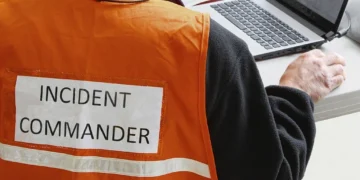Q: Which Resource Management Task Enables Resource Coordination Throughout The Incident?
Contents Show
A. Reimburse and Restock
B. Order and Acquire
C. Track and Report
D. Demobilize
The answer is (C): Track and Report. Track and Report task enables resource coordination throughout the incident.
Below is the complete guide, you should read;
Resource management plays a critical role in effectively responding to incidents and emergencies. One key task within resource management is coordinating resources throughout the incident.
Coordinated resource coordination ensures that the right resources are deployed to the right place at the right time, maximizing their efficiency and effectiveness.
A comprehensive guide to incident resource management, focusing specifically on the task of resource coordination.
Understanding Resource Coordination
Resource coordination involves the strategic allocation and utilization of resources to address the needs of an incident.
It aims to optimize the deployment of resources, minimize duplication, and ensure efficient utilization. Resource coordination encompasses several essential elements, including:
1. Communication
Effective communication channels and protocols must be established to facilitate the flow of information between incident managers, resource managers, and field personnel.
Clear and concise communication ensures that resource requests and allocations are understood and acted upon promptly.
2. Resource Tracking
Accurate tracking of resources is essential to know the availability, location, and status of each resource. This includes personnel, equipment, supplies, and other assets.
Modern technologies such as resource management software or incident management systems can help streamline tracking processes.
3. Resource Requests And Allocations
A systematic process should be in place to receive, assess, prioritize, and fulfill resource requests.
Incident commanders or resource managers must evaluate the requirements of the incident and allocate resources accordingly.
This may involve considering factors like resource capabilities, proximity, and urgency.
Recommended: What Information Should Be Documented In An Incident Log?
6 Key Steps For Coordinated Resource Coordination
1. Incident Assessment
Begin by assessing the incident’s nature, scope, and potential impact. This evaluation helps determine the type and quantity of resources needed.
Gather information from incident reports, field observations, and subject matter experts to inform resource coordination decisions.
2. Resource Inventory
Maintain an up-to-date inventory of available resources. This includes personnel with specific skills, equipment, supplies, and specialized teams.
Regularly update the inventory and ensure it is accessible to incident managers and resource coordinators.
3. Resource Request Process
Establish a standardized resource request process that includes necessary details such as the type of resource, quantity, location, and expected duration.
Provide clear guidelines on who can request resources and how to prioritize requests based on urgency and criticality.
4. Resource Allocation
Once resource requests are received, evaluate their urgency and impact on incident operations. Consider factors like resource availability, proximity, capabilities, and potential future resource needs.
Prioritize resource allocations to ensure the most critical needs are addressed promptly.
5. Tracking And Deployment
Maintain a centralized system to track resource allocations and deployments.
Utilize technology tools such as resource management software or incident management systems to monitor the status, location, and utilization of resources in real time.
This enables incident managers to make informed decisions and adjustments as needed.
6. Continuous Evaluation And Feedback
Regularly evaluate the effectiveness of resource coordination efforts. Seek feedback from incident managers, field personnel, and resource providers to identify areas for improvement.
Adjust coordination strategies based on lessons learned to enhance future incident response.
Best Practices For Coordinated Resource Coordination
1. Collaboration And Cooperation
Foster collaboration among incident managers, resource coordinators, and field personnel.
Encourage open communication channels and promote a cooperative culture to ensure effective resource coordination.
2. Training And Preparedness
Provide comprehensive training to all personnel involved in resource coordination. This includes incident managers, resource coordinators, dispatchers, and field responders.
Regular drills and exercises can enhance preparedness and familiarize teams with coordination processes.
3. Standard Operating Procedures (SOPs)
Develop and document clear SOPs for resource coordination. SOPs should outline roles, responsibilities, communication protocols, and decision-making criteria.
Regularly review and update SOPs to align with evolving incident management practices.
4. Technology Integration
Leverage technology tools to streamline resource coordination processes.
Implement resource management software or incident management systems that enable real-time tracking, data analysis, and efficient communication.
5. After-Action Reviews
Conduct thorough after-action reviews following incidents to assess the effectiveness of resource coordination efforts. Identify successes, challenges, and areas for improvement.
Incorporate lessons learned into future incident response plans.
Conclusion
Coordinated resource coordination is a vital task within incident resource management.
By implementing effective communication, resource tracking, and allocation strategies, incident managers can optimize the use of available resources and ensure they are appropriately deployed throughout an incident.
By following the steps and best practices outlined in this guide, organizations can enhance their resource coordination capabilities, leading to more efficient and effective incident response.












I have been surfing online more than 3 hours today, yet I never found any interesting article like yours. It is pretty worth enough for me. In my opinion, if all web owners and bloggers made good content as you did, the web will be much more useful than ever before.